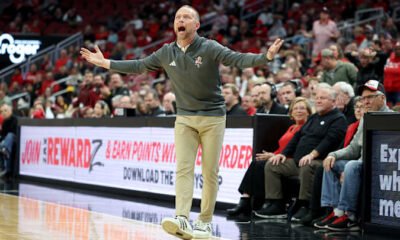Blog
Led Zeppelin’s Night of Resurrection: The O2 Concert That Shook the World
“I never thought I’d see the day Led Zeppelin came back to life.” That quote echoed across message boards, fan forums, living rooms, and stadium parking lots after December 10, 2007. On that night, something unthinkable happened. The surviving members of Led Zeppelin—Robert Plant, Jimmy Page, and John Paul Jones—walked onstage together again, joined by Jason Bonham on drums, to honor the man who had once believed in them more than anyone else: Atlantic Records co-founder Ahmet Ertegun. This was not a tour announcement. Not a marketing ploy. Not a cash grab. This was one night. One shot. A concert for a man who helped birth their career, held together by grief, legacy, and the unrelenting power of music that still mattered. And what happened inside London’s O2 Arena that night was nothing short of a resurrection. As the lights dimmed and the opening notes of “Good Times Bad Times” erupted from the stage, the sold-out crowd of 20,000 erupted into pure hysteria. People screamed, hugged, cried, even collapsed. Some had waited nearly three decades for this moment. Others were too young to have ever seen the band live in their prime, but had been raised on their music like sacred scripture. This wasn’t just nostalgia. This was salvation. For many, this was the night the golden age of rock returned, if only for two hours.
Jason Bonham, son of the late John Bonham, had the heaviest shoes to fill. Yet from the first crash of his cymbals, it was clear he wasn’t imitating his father—he was channeling him. With intensity, precision, and deep emotional connection, Jason didn’t just play the songs—he played the heart of them. Watching him behind the kit, sweating and thundering with everything he had, was like watching the past and present coexist in one form. It brought fans to tears and the band to life. Jimmy Page, now white-haired but still wielding his Les Paul like a magician’s wand, played with fire in his fingers. His riffs were sharp, soulful, and just as fierce as ever. When he broke into the bow solo during “Dazed and Confused,” lights slashing around him, time seemed to warp. For a moment, he wasn’t 63. He was the same flame-throwing mystic that had once mesmerized Madison Square Garden. Each note he struck sent tremors through the crowd.
Robert Plant, once the lion-maned wailer of the ’70s, took the stage with power and purpose. While his voice had deepened with age, he chose grace over mimicry. He didn’t try to scream like he did at 22—he sang like a man who had lived. And that made the songs richer, more layered. “Black Dog” was feral, “Since I’ve Been Loving You” bled emotion, and when he sang the opening lines of “Stairway to Heaven,” the arena went utterly still. It wasn’t just about hitting the notes—it was about meaning them. And Plant meant every word. John Paul Jones, ever the quiet cornerstone of the band, provided the glue. His basslines pulsed beneath every song, grounding them, giving Page and Plant the freedom to soar. His keyboard work on “No Quarter” was haunting and atmospheric, like drifting through a dream. He never stole the spotlight, but without him, there would be no show. He reminded everyone that Zeppelin wasn’t just a trio with a drummer—it was a true quartet, and every piece was essential.
The setlist was a masterclass in rock history. “Ramble On,” “Misty Mountain Hop,” “In My Time of Dying,” “Trampled Under Foot”—each one was performed not as a relic, but as a living, breathing creation. They didn’t just play the hits. They told a story, one riff and scream at a time. The crowd sang along, but not in the passive way people hum along at festivals. These were chants. Prayers. Communions. And then came “Kashmir.” If there was one song that defined the scope, scale, and swagger of Led Zeppelin, it was this. And live, it was something else entirely. The Middle Eastern rhythms, the hypnotic groove, the vocal incantations—it became ritualistic. You could feel it in your chest. You could see it in the eyes of everyone around you. They weren’t just watching a concert. They were living in a moment that would echo forever.
The energy never dropped. Every song poured more fuel on the fire. When they launched into “Whole Lotta Love,” the walls shook. The bluesy breakdown in the middle, filled with echo and reverb, built into a climax so intense that the O2 Arena felt more like Valhalla than a venue. And when they closed with “Rock and Roll,” it was pure, unfiltered ecstasy. The crowd became one mass of movement and sound. You could almost see the ghosts of past performances swirling above them—Madison Square Garden ’73, Earl’s Court ’75, Knebworth ’79. They were all there, in spirit.
But this night was about more than music. It was about memory. Legacy. Healing. It was about proving that the spirit of rock doesn’t die when the tour ends or when a member is lost. It lives in the echo of the crowd, in the rhythm passed down from father to son, in the chords that still cause goosebumps no matter how old you are. The O2 Arena show wasn’t just a concert. It was a cultural reset. It reminded a generation who forgot—and one that never knew—what real rock and roll sounds like when played by the architects themselves.
After the final notes faded, after the bows were taken and the house lights came up, there was a strange silence. Nobody wanted to leave. Some stood frozen in place. Others wept. Because deep down, everyone knew this was a once-in-a-lifetime event. A lightning strike. A gift. The band left the stage, but they left behind something bigger than music. They left behind a memory carved into the soul of every person who was lucky enough to be there. In the days that followed, the demand for a full reunion tour exploded. But it never came. And maybe that’s what makes this night even more special. Because it wasn’t the start of something—it was the perfect ending.
A thank-you. A farewell. A moment. One night, where the gods of rock stepped down from Olympus, picked up their instruments, and reminded the world what it feels like to be truly alive. December 10, 2007, was more than a performance. It was a resurrection. And it shook the world.
Jimmy Page surprises Robert Plant on his birthday with a heartfelt gift: a hand-drawn Led Zeppelin portrait that is a soulful memoir in every stroke. At a warm and personal celebration, Jimmy Page moved everyone to tears when he presented Robert Plant with a one-of-a-kind drawing—more than just a band image, it tells a story of friendship, adversity, and glory in every line. The audience fell silent, and several people burst into tears, as if they were reliving the fabled era. Social media erupted: “This is not just a gift—it’s the heart and soul of rock ‘n’ roll!” Fans believe this is the beginning of a new chapter for the legends
Jimmy Page Moves Robert Plant to Tears with Heartfelt Birthday Gift: A Hand-Drawn Led Zeppelin Portrait That Captures the Soul of Rock
At a celebration that felt more like a reunion of souls than a birthday party, legendary guitarist Jimmy Page stunned Robert Plant with a deeply personal and emotional gift—a hand-drawn portrait of Led Zeppelin, etched with the memories of a lifetime. The artwork, unveiled during an intimate gathering to mark Plant’s birthday, left the entire room in awe and tears.
The drawing was more than just an artistic tribute. Every line, every shadow, and every expression captured a different chapter of the band’s monumental journey. From their early days of raw ambition to their meteoric rise and era-defining sound, the portrait stood as a memoir in ink—a silent echo of guitars, stages, and songs that changed the world.
Jimmy Page, known for his mysterious aura and masterful musicianship, revealed a different side of himself in this moment. Quiet, vulnerable, and visibly emotional, he handed over the framed piece to Plant with a few simple words: “This is for the years we lived, the sounds we made, and the bond we never broke.” Those in attendance say the room went still, as if time paused out of respect.
Robert Plant, who has often been the poetic voice of rock’s mystic side, clutched the portrait and—according to witnesses—fought back tears. “He was speechless,” one attendee shared. “You could see him reliving the entire Zeppelin story just by looking at it.”
The image included not only Page and Plant but also late drummer John Bonham and bassist John Paul Jones, each depicted with a subtle glow that hinted at both presence and memory. Bonham’s image, especially, struck a deep chord—his gaze immortalized with a mix of mischief and power, just as fans remember him.
As the room recovered from the emotional wave, attendees began sharing their own memories of Zeppelin’s timeless journey. Friends, family, and longtime collaborators were seen embracing, reflecting on the legacy they had all helped to create or witness. One guest whispered, “It felt like we were all back in 1975, backstage, hearts pounding, ears ringing.”
News of the moment didn’t stay confined to that warm room for long. Within hours, social media exploded. A photo of the portrait—shared by someone close to the band—began circulating with the caption, “This isn’t just a gift. It’s the heartbeat of rock.” Fans across the globe reacted with an outpouring of emotion, sharing their own stories of how Led Zeppelin’s music shaped their lives.
Memes, tribute videos, and emotional tweets flooded platforms, with hashtags like #ZeppelinForever and #PlantAndPage trending globally. Many interpreted the gift not only as a sign of enduring friendship but also as a possible signal that something more might be on the horizon.
“This is the beginning of something,” a fan wrote on Instagram. “Maybe not another tour, maybe not an album—but a reconnection. And sometimes, that’s more powerful.”
Page and Plant, famously protective of their legacy, have walked separate musical paths for years, occasionally crossing for special performances. But moments like this one hint at a shared respect and emotional bond that never truly faded—even through time, loss, and personal evolution.
Whether or not this deeply emotional exchange leads to a new collaboration remains to be seen. But what’s certain is that the connection between these rock icons is alive and well—and as potent as ever.
The portrait, which some are now calling “The Zeppelin Memoir,” is rumored to be eventually displayed publicly, perhaps at a museum or charity exhibition. Fans are already petitioning to have it featured in a touring gallery celebrating rock history.
For now, the world watches and listens, once again hanging on every chord of Page’s guitar and every lyric from Plant’s soul. This was more than a birthday. It was a reminder that legends may age, but they never truly fade.
-

 Blog5 months ago
Blog5 months agoPat Kelsey sends a strong three-word fiery message to the Louisville basketball’s team after their Cardinals 14th win…
-

 Blog7 months ago
Blog7 months agoNetflix releases “The Underdog,” a much-anticipated documentary about Drew Brees. slated for publication on the 25th
-

 Blog5 months ago
Blog5 months agoMikaela Shiffrin responds to cross-country skier Jessie Diggins’ letter following her failure to secure a solitary podium finish at the FIS Nordic Worlds
-

 Blog3 months ago
Blog3 months agoBehind the Turns: Netflix’s Upcoming Documentary on Mikaela Shiffrin’s Fights, Fears, and Love
-

 Blog4 months ago
Blog4 months agoLegacy Tour Led Zeppelin has officially confirmed their 2026 reunion tour, which will be their first extensive live performances since 2007. The “Led Zeppelin Legacy Tour 2026” will begin on June 10, 2026, at Los Angeles’ SoFi Stadium.
-

 Blog5 months ago
Blog5 months agoWomen’s Slalom Run 1 at the FIS Alpine Skiing World Cup: Are
-

 Blog5 months ago
Blog5 months ago“Courtside to Aisle-Side: Tyrese Haliburton and Jade Jones Set New Wedding Date”
-

 Blog7 months ago
Blog7 months agoFederica Brignone: “I’m fine, but my return to skiing is far off.”
